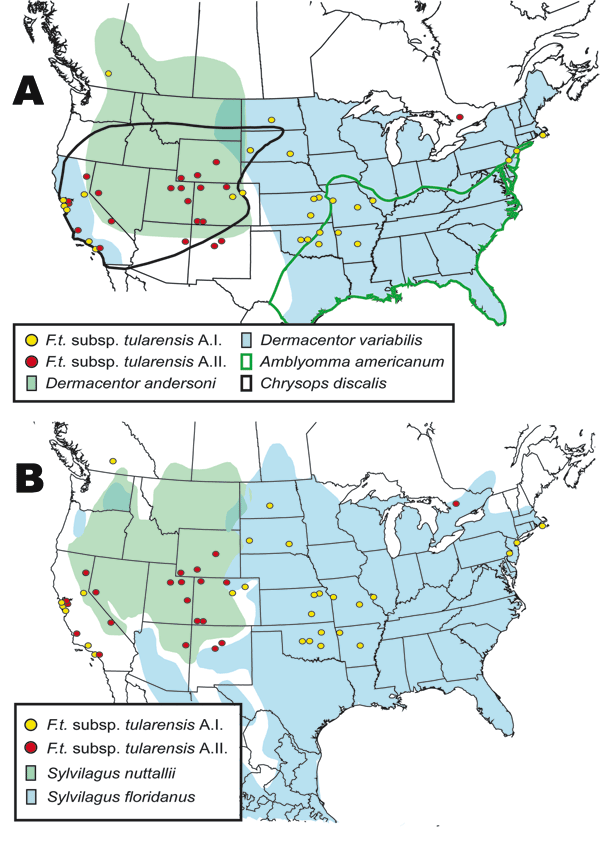Volume 11, Number 12—December 2005
Synopsis
Francisella tularensis in the United States
Figure 7

Figure 7. Spatial distributions of isolates from the A.I. and A.II. subpopulations of Francisella tularensis subsp. tularensis relative to A) distribution of tularemia vectors Dermacentor variabilis, D. andersoni, Amblyomma americanum, and Chrysops discalis; and B) distribution of tularemia hosts Sylvilagus nuttallii and S. floridanus.
Page created: February 02, 2012
Page updated: February 02, 2012
Page reviewed: February 02, 2012
The conclusions, findings, and opinions expressed by authors contributing to this journal do not necessarily reflect the official position of the U.S. Department of Health and Human Services, the Public Health Service, the Centers for Disease Control and Prevention, or the authors' affiliated institutions. Use of trade names is for identification only and does not imply endorsement by any of the groups named above.